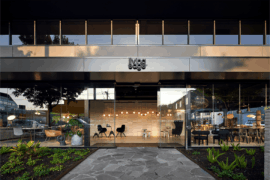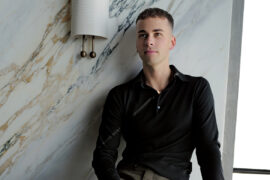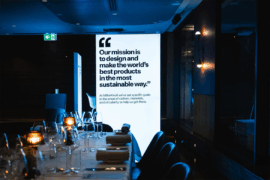Designer, Adam Cornish talks origins, influences, process, collaboration and the current struggles faced by Australian creatives.
Tell me how you got started as a designer – what sparked your interest, what did you study, and how has the course of your career changed over time?
I think becoming a designer was just a continuation of my natural curiosity. As a child I can remember always being interested in how things were made and how they went together. I think it is a very common trait of a designer to question things and ask why, why like this and not like that etc.
My early interest at school were definitely art and sciences especially biology. I think design is a combination of these two ways of thinking and have definitely impacted my design process. I studied industrial design and furniture making and believe designers should take a more hands on approach, in my experience you learn so much by making as opposed to just designing on a computer screen.
Who, or what are some of your influences? Other designers, artists, nature?
I am influenced by all of my experiences, I try to stay open to all that is going on around me and filter and keep the bits that inspire me. I think this process happens subconsciously and is important to developing one’s own authentic language.
As far as designers and artists go. I love the work of Poul Kjaerholm! His work is simple beautiful and always intelligent in its logic. Tragically Poul died relatively young so we all have a small sample of the great potential this person had to offer. Please check out the PK 25 to see what I mean!
Can you describe your design process?
This is always a tough question to answer simply. My design process is something, which I think, is always evolving, however I think the end goal has always been relatively the same. I want to create simple, smart products that consider how people interact with them. I am not interested in gimmicky, statement driven objects. Our world has a limited amount of resources and wasting these on meaningless products is just criminal.
Can you tell me about Alessi, and what you’ve been working on since? What are you working on right now?
We were so lucky as a studio to have Alessi as our first client. We started with the “Trinity Centrepiece” and eventually developed the product into a family of baskets and fruit holders. Our relationship with Alessi continues to be one of great trust and is experimental and research driven. It is a beautiful thing when designer and company trust each other and allow for experimentation. As this environment is where I believe great design comes from.
What do you think are some of the challenges facing Australian designers right now?
One of the most challenging areas facing Australian designers at the moment would definitely be the inadequate law and legislation in regards to intellectual property and design theft in this country. Australia needs to lift its standards to be in line with Europe and other nations.
INDESIGN is on instagram
Follow @indesignlive
A searchable and comprehensive guide for specifying leading products and their suppliers
Keep up to date with the latest and greatest from our industry BFF's!

For Aidan Mawhinney, the secret ingredient to Living Edge’s success “comes down to people, product and place.” As the brand celebrates a significant 25-year milestone, it’s that commitment to authentic, sustainable design – and the people behind it all – that continues to anchor its legacy.

With experience across fashion, styling and interiors, Nicholas Gilbert launches Studio Nicholas with a mission to elevate Australian design on the world stage — and to champion a more rigorous, professional future for the industry.

At the NGV’s Making Good: Redesigning the Everyday, design becomes a force for repair. From algae-based vinyl to mycelium earplugs, the exhibition proves that rethinking the ordinary can reshape our collective future.
The internet never sleeps! Here's the stuff you might have missed

MillerKnoll reimagines the convention of dinner table interactions by plating up a future-forward menu of sustainable design conversation starters as part of the inspiring “Conversations for a Better World” event series.

CPD Live returns for its final live-presented season of 2025, bringing architects, designers, and specifiers a free opportunity to earn CPD points before the year ends. Kicking off at 9 AM AEDT, This Tuesday 14th October.